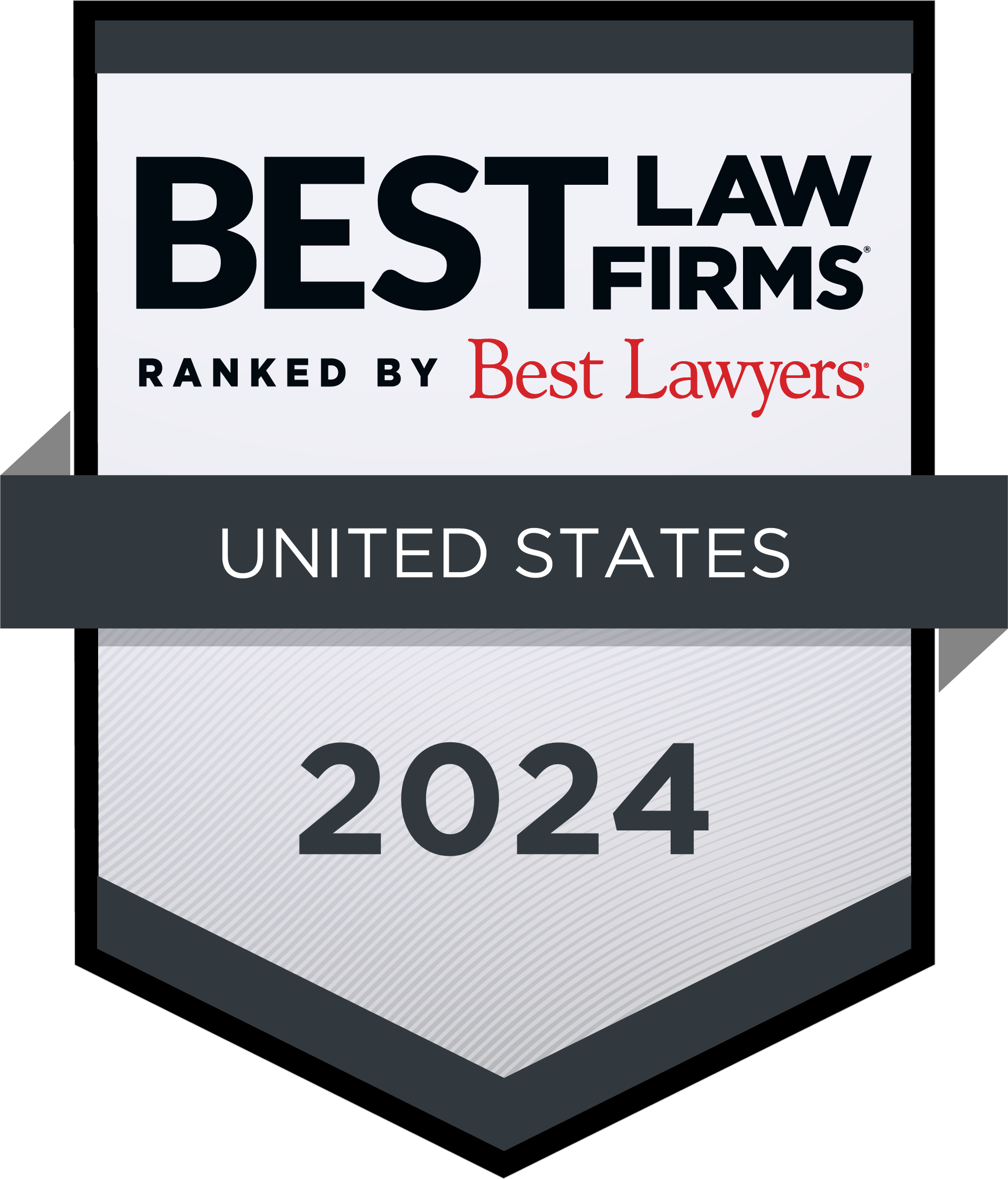Considerations When Establishing A Private Fund
Private funds are pooled investment vehicles that the Investment Company Act of 1940 excludes from the definition of “investment company.”The term private fund is commonly associatedwith hedge funds and private equity funds.[1]Essentially, in a private fund structure, multiple passive investors make a commitment to invest capital in the private fund vehicle.[2] The private fund manager, sometimes referred to as the “fund sponsor,” is then responsible for investing the pooled capital commitments – either directly or through an appointed third-party – into one or more investments pursuant to the private fund’s prescribed investment strategy.
The creation of a private fund can have severalbenefits to both investors and the organizer. However, before creating a private fund, multiple rules should be analyzed to determine what types of registrations and/or exemptions apply to the fund and the organizer based on their respective activities. While this article is by no means intended to be an exhaustive list of all such rules and regulations that might apply, at a minimum the following three questions should be examined prior to setting up any private fund.
(1) Will the Fund Need to Register Pursuant to the Investment Company Act of 1940?
As mentioned above, a private fund is by definition a pooled investment vehicle that is excluded from the definition of an “investment company”[3] pursuant to the Investment Company Act of 1940 (the “Investment Company Act”). This is important as investment companies must register with the Securities and Exchange Commission (“SEC”), perform annual public filings, comply with conflict of interest and prohibitions on affiliated transaction rules, etc. Such initial registration and ongoing requirements can be very costly and time consuming. Therefore, savvy organizers usually ensure fund operations fall within the definitional exclusions of Section 3(c) of the Investment Company Act. The two exclusions that private funds most often rely upon are Section 3(c)(1) and Section 3(c)(7)[4] of the Investment Company Act:
(A) Section 3(c)(1) of the Investment Company Act
Section 3(c)(1) excludes from the definition of an investment company any issuer whose “outstanding securities are beneficially owned by not more than one hundred (100) persons and which is not making and does not presently propose to make a public offering of its securities.”[5] This is the most commonly used exemption as the 3(c)(1) exemption does not have additional investor status limitations (as does the 3(c)(7) exemption, see below). While simplistic in its wording, this exemption can be difficult to adhere to as it is not always obvious how certain investors should be counted towards the 100-investor limit. For example, when an entity invests in a 3(c)(1) fund, itcounts as a single owner except when the entity was formed for the sole purpose of investing in the fund. If the latter applies, the fund must “look through” the entity and count each underlying investor toward the 100-investor limit. As such, fund operators must carefully scrutinize the source of funds from investors or risk invalidating the exemption.
(B) Section 3(c)(7) of the Investment Company Act
Section 3(c)(7) excludes from the definition of an investment company any issuer whose “outstanding securities are owned exclusively by persons who, at the time of acquisition of such securities, are qualified purchasers, and which is not making and does not at that time propose to make a public offering of such securities.”[6]Noticeably absent from this exemption is any maximum investor limit. Instead, all investors must have “qualified purchaser”status. To be considered a qualified purchaser, an investor’s total amount of investments owned must meet certain thresholds as specified in Section 2(a)(51) of the Investment Company Act. As of this writing, institutions must have at least $25 million in investments while individuals must have at least $5 million in investments to be a qualified purchaser. Many investors who would otherwise wish to invest in a 3(c)(7) fund are barred from participating due to this burdensome restriction.
(2) Will the Securities Issued by the Fund Need to be Registered Pursuant to the Securities Act of 1933?
Absent an exemption, offers and sales of securities must be registered with the SEC pursuant to the Securities Act of 1933 (the “Securities Act”). When investors provide capital to private funds, they often receive security interests in the fund in return. Therefore, funds must register the sale of these securities unless an exemption exists. There are several exemptions, or partial exemptions, that may be utilized by a private fund (i.e., Section 4(a)(2), Regulation Crowdfunding, Regulation A, etc.). However, the two most common exemptions under the Securities Act are within Rule 506 of Regulation D: Rule 506(b) and Rule 506(c).
(A) Section 506(b)
In order to rely upon the Section 506(b) exemption,the offering must meet certain criteria. Neither the fund nor any person acting on behalf of the fund may use general solicitation oradvertising[7] to market, offer, or sell the securities.Each investor must be an “accredited investor” as defined in Regulation D, or a “sophisticated non-accredited investor.” Natural persons holding a Series 7, Series 65, or Series 82 license count as accredited investors, as do individuals with income greater than $200,000, or assets in excess of $1,000,000.[8]There may only be up to thirty-five (35) sophisticated non-accredited investors,but the fund must first certify in an additional disclosure document that each one possesses “sufficient knowledge and experience in financial and business matters to make them capable of evaluating the merits and risks of the prospective investment.”[9]
(B) Section 506(c)
In order to rely upon the Section 506(c) exemption, the offering must meet a similar set of criteria. Each investor must be an “accredited investor” as defined in Rule 501 of Regulation D. No sophisticated non-accredited investors may participate in the offering. The issuer must take reasonable steps to verify that each purchaser is an accredited investor. However, a fund who makes a 506(c) offering is permitted to engage in general solicitation and advertising to market the offered security.
(C) Form D and Blue-Sky Filings
As mentioned above, funds that comply with the requirements of Regulation D Rule 506(b) or (c) are exempt from their offering of securities with the SEC. However, they still must file what is known as a “Form D” electronically with the SEC within fifteen (15) days of the first date of sale of the securities. Form D is a brief notice that includes the names and addresses of the company’s promoters, executive officers and directors, and some details about the offering, but contains little other information about the company.[10]If a fund makes a 506(b) offering to which sophisticated non-accredited investors subscribe, the Form D will also include additional information about those investors.
An issuer should also check that the offering complies with state securities law offering requirements, known as Blue-Sky laws, which may include a notice filing or other filing as required by the state. Such filings are usually handled electronically though the North American Securities Administrators Association Electronic Filing Depository System (“NASAA EDF”), but the process could be more involved depending on where the fund has offices and where its investors reside.[11]
(3) Will the Activities of the Fund Sponsor/Adviser Require Registration Pursuant to the Investment Advisers Act of 1940?
Section 202(a)(11) of the Investment Advisers Act of 1940, as amended (the “Advisers Act”) provides for a very broad definition of who is an investment adviser. Essentially, anyone who (1) for compensation, (2) is engaged on the business of (3) providing advice or analyses to others regarding securities is considered an investment adviser who must register as such pursuant to the Advisers Act. When applying this to most private funds, you need to examine what the operations of the fund include, and what happens to the pooled capital. If the capital is being invested in securities[12], then in all likelihoodthe fund sponsor (or a third-party designee responsible for investing the capital into securities) must register as an adviser absent an exemption.[13]
In 2012, the Dodd-Frank Act replaced the old “private adviser” exemption,which many advisers to private funds had relied upon previously for exemption from registration with the SEC, with the narrower “Exempt Reporting Adviser” exemption.[14] This exemption applies to advisers that exclusively adviseventure capital funds and/or private funds with less than $150 million in assets under management combined among all such funds.
Investment advisers to private funds use Form ADV to register with the SEC and/or certain state securities authorities.[15] Investment advisers to private funds must report on Form ADV general information about private funds that they manage, including basic organizational and operational information as well as information about the fund’s key service providers.[16]
In addition to registering as an adviser, there may be additional registrations required (i.e., with the CFTC as a CPO/CTA), or other forms required to be filed (i.e., Form PF, Form 13F, etc.).
Conclusion
The rules and considerations outlined above exemplify the importance of understanding the multitude of laws that can each significantly impact the organization, operation, and ultimate success of any private fund venture. Depending on the nature of the fund, there can be additional rules, registrations and/or filings that could apply. Before taking in investor money, it is paramount to analyze the proposed activities to determine what rules will apply to the fund.
We do it all and Shustak Reynolds & Partners is here to help. We focus our practice on securities and financial services law and complex business and financial disputes. We represent many broker-dealers, registered representatives, investment advisors, investors and businesses. For assistance in reviewing such rules, performing required filings and/or drafting fund documents,please contact us by visiting our website at https://www.shufirm.com/contact/ or by calling (619) 696-9500.
[2]Private funds typically utilize Limited Liability Company (“LLC”) or Limited Partnership (“LP”) entity structures to take advantage of limited liability protections and pass-through tax benefits.
[3] "Investment company" is defined by Section 3 of the Investment Company Act and rules therein.
[4] Section 3(c)(5) is also commonly used when investing in real property.
[5] See Section 3(c)(1) of the Investment Company Act.
[6] See Section 3(c)(7) of the Investment Company Act.
[7] General solicitation and general advertising include, but are not limited to, any advertisement, article, notice, or other communication published in any newspaper, magazine, or similar media; or broadcast over television, radio, or the Internet (or other communications devices); and any seminar or meeting whose attendees have been invited by any general solicitation or general advertising.
[8] See Rule 501 of Regulation D the Securities Act.
[9] Id.
[10]See https://www.investor.gov/introduction-investing/investing-basics/glossary/regulation-d-offerings
[11] Arizona, Connecticut, Florida, Maine, and New York do not use EFD.
[12] For further information concerning what the SEC deems to be a “security” see https://www.sec.gov/about/offices/oia/oia_investman/rplaze-042012.pdf.
[13] Exemptions to registration as an investment adviser are codified in Section 203(b) of the Advisers Act.
[14] The Dodd-Frank Act did not provide a “grandfather” provision or similar clause to those who had previously relied upon the old “private adviser” exemption, and as a result, many previously unregistered advisers to private funds were required to register with the SEC or the states.
[15]Form ADV is typically electronically filed using the Investment Advisors Registration Depository (IARD)
[16] For more on the requirements for investment advisors to private funds, see https://www.sec.gov/divisions/investment/advoverview.htm





